In today's dynamic business environment, logistics and supply chain management play pivotal roles, driving progress and shaping industries worldwide. The intricate dance of moving goods, managing inventory, and optimizing transportation routes forms the very heartbeat of successful businesses. Understanding the intricacies of logistics is not just important; it's fundamental for professionals in this field, ensuring efficient operations and satisfied customers.
SIAM Shipping stands as your dedicated partner, offering expertise that transcends the ordinary. We provide a 360-degree view of logistics, unraveling its complexities and offering tailored solutions. From navigating supply chain intricacies to optimizing warehouse operations, our team is here to guide you. Whether you're delving into the logistics landscape for the first time or seeking advanced strategies, trust us to be your beacon. Join us in this journey, where logistics expertise meets unparalleled passion, ensuring your success in every shipment, every mile, and every operation.
Table of Contents
What is logistics? Definition and perspective
The term “logistics” describes the total process of controlling the acquisition, storage, and delivery of resources to their intended location. Choosing potential suppliers and distributors and evaluating their efficiency and accessibility are all part of logistics management. The term "logisticians” is used to describe logistics managers.
Logistics is often defined as the art and science of optimizing the flow of materials, information, and capital. It includes the following activities:
- Transportation: the movement of goods and services from one point to another.
- Storage: the warehousing of goods and services in warehouses or stores.
- Distribution: the delivery of goods and services to customers.
In the context of these fundamental logistics principles, it's essential to consider the latest logistic statistical insights into the global freight and logistics market. According to recent data, the global freight logistics market experienced a notable growth of 5.5% in Compound Annual Growth Rate (CAGR) in 2023. This growth, despite challenges posed by global events such as the conflict between Russia and Ukraine, signifies the resilience and adaptability of the logistics industry in the face of adversity.
This statistic not only emphasizes the industry's robustness but also underlines the importance of logistics in the global economy. As we delve deeper into the intricate facets of logistics, this statistic serves as a testament to the industry's dynamic nature and its significant role in shaping the modern business landscape.
Types of logistics
Logistical elements are, in their simplest form:
Procurement logistics
Is the process of acquiring the raw materials and components needed to produce a product or service. It involves identifying and selecting suppliers, negotiating contracts, and managing inventory.
Production or manufacturing logistics
Manufacturing is the process of moving raw materials and components through the production process to create a finished product. It involves planning and scheduling production, managing inventory, and ensuring quality control.
Distribution logistics
Distribution logistics takes the finished products and gets them where they need to go. This includes everything from packing services and warehousing to managing outbound transportation and last-mile deliveries. It's all about making sure customers get what they want, when they want it, and this has been the example of Thailand that succeeded to face logistics challenges during the last 20 years in order to uplift their economy.
Disposal logistics
Disposal logistics is the process of managing the return, reuse, recycling, or disposal of products and packaging that have reached the end of their useful life. It is important to consider disposal logistics when designing products and packaging in order to minimize environmental impact.
DocShipper info : For comprehensive solutions tailored for you, discover SIAM Shipping, your go-to partner for all logistics needs. From integrated logistics to logistics services, we simplify the complexities for you. Feel free to contact us for any logistical needs.
Types of logistics companies

E-commerce logistics
In the rapid evolution of the global supply chain, logistics has emerged as a driving force, propelled by the explosive growth of e-commerce. Leading this charge is industry giant Amazon, a prime example of successful logistics management and innovation. With a strategic network of fulfillment centers and sortation centers, Amazon's intricate logistics infrastructure enables seamless deliveries, which stands them above any competitors and lets them always preview e-commerce logistics trends that are coming. From its origins as an online bookstore, Amazon has transformed into a global logistics leader by mastering the best practices for e-commerce shipping and reshaping how goods are swiftly transported to customers worldwide. This journey highlights the pivotal role of integrated logistics and logistics experts in shaping the future of commerce.
Third-party logistics
Amazon, alongside notable third-party logistics (3PL) giants like UPS and FedEx, has revolutionized the logistics landscape. These companies serve as pivotal players, handling items from origin to destination, offering warehousing, and efficient packaging services. Partnering with third-party logistics providers delivers numerous advantages to businesses, big and small. It enables them to secure better rates, expand into new markets and enhance customer service, all while optimizing their logistics management strategies for an evolving market.
Freight logistics
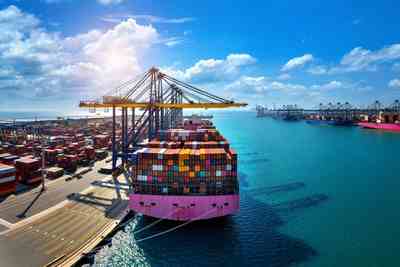
For instance, SIAM Shipping excels in global freight forwarding and logistics services, offering streamlined and efficient solutions tailored to meet diverse supply chain needs. With a focus on integrated logistics, our services optimize every step of the process. From precise logistics management to seamless supply chain logistics, SIAM Shipping serves as an industry expert, revolutionizing the dynamics of logistics in business and ensuring cost-effective, top-tier services for our clients. Our expertise extends to outbound logistics, reverse logistics, and connecting businesses with our extensive logistics industry network, transforming how companies approach their supply chain requirements.
SIAM Shipping Tip : Outsourcing Your Logistics? Contact us for hassle-free and customized solutions. Our experts make sure your transactions are done smoothly and efficiently. Contact us for your logistics needs. Response guaranteed within 24 hours.
Carrier logistics
Carrier logistics refers to companies that primarily focus on transportation. These carriers ensure the physical movement of goods, playing a vital role in logistics and supply chain management. They emphasize outbound logistics and work in tandem with other logistics partners to provide seamless transportation solutions.
Freight forwarders
Freight forwarders act as intermediaries between shippers and carriers, coordinating international shipments. They specialize in logistics services, particularly freight logistics and integrated logistics. Freight forwarders streamline logistics management and supply chain logistics, ensuring the efficient movement of goods globally.
Incorporating these diverse logistics companies into the discussion offers a comprehensive view of the varied facets of the logistics industry, each playing a crucial role in the broader context of logistics in business and the logistics industry.
Why is logistics so important?

The movement of goods and the financial health of any business emphasize the importance of effective logistics management. This crucial function directly impacts a company's bottom line, making it a non-negotiable priority regardless of its size. Successful logistics management yields six key advantages:
- Visibility: By enhancing supply chain visibility, logistics management empowers firms to control costs, identify inefficiencies, plan demand, and seize opportunities.
- Cost Efficiency: Proactive inventory monitoring reduces expenses, from shipping costs to warehouse space, optimizing overall expenditure.
- Enhanced Customer Experience: Swift, reliable order fulfillment elevates the customer experience, fostering brand loyalty and driving repeat purchases.
- Loss Prevention: Accurate inventory tracking and secure logistics processes prevent loss by ensuring stock accuracy, minimizing damage, and averting misplacement.
- Competitive Edge: Timely and accurate deliveries, bolstered by robust logistics management, cultivate customer satisfaction, driving repeat orders, positive feedback, and a strong brand reputation.
In essence, prioritizing effective logistics management not only safeguards a company's financial health but also sharpens its competitive advantage in the market, ensuring sustained growth and customer loyalty.
SIAM Shipping Alert : Your Choice Matters! Choosing the wrong shipping company could end up costing you a lot! You may end up losing your time, money, and energy, which is why you can't afford to make a mistake. We understand the complexities of logistics. Reach out to us now for personalized guidance and expertise.
The three logistics pillars
Logistics is a complex and ever-evolving field, but at its core, it is based on three pillars: inbound logistics, outbound logistics, and reverse logistics. These fundamental elements are the bedrock of efficient supply chain management, each playing a unique and vital role in ensuring the seamless flow of goods from sourcing to delivery, and even after the product has reached its destination. Inbound logistics manages the entry of resources into the production cycle, outbound logistics ensures timely delivery to end-users, and reverse logistics handles returns, repairs, and recycling, emphasizing sustainability and innovation within the supply chain. Understanding and optimizing these pillars is key to mastering the intricate dynamics of the logistics industry.
Inbound logistics
Inbound logistics focuses on the systematic handling of materials, supplies, and products as they enter a company's premises. It optimizes material and supplier sourcing, ensuring a seamless flow of resources into the production process.
Outbound logistics
Outbound logistics meticulously manages the movement of finished goods from production to consumers. It encompasses transportation and shipping steps, emphasizing timely and secure deliveries to end-users.
Reverse logistics
Reverse logistics revolves around the efficient handling of product returns, repairs, recycling, and disposal. This crucial process minimizes waste and emphasizes logistics innovation in sustainable practices, ensuring products are handled efficiently even after they leave the consumer's hands.
How to implement a logistics process

1. Define Your Logistics Strategy:
Begin by clearly defining your logistics strategy, incorporating aspects like integrated logistics, supply chain and logistics management. Identify your goals, whether it's optimizing transportation, enhancing warehouse efficiency, or improving order fulfillment. A robust strategy provides a roadmap for tactical improvements and prepares you for potential challenges.
2. Stay Agile and Adaptable:
Incorporate flexibility into your logistics plan. Stay vigilant about market shifts, geopolitical events, or natural disasters that might impact your supply chain. Be prepared to adapt your logistics operations promptly. Consider options like reverse logistics or exploring new vendors to mitigate disruptions. The ability to swiftly adjust your logistics approach is key to maintaining a resilient supply chain.
3. Continuous Monitoring and Optimization:
Implement a robust monitoring system to keep a close eye on your logistics performance. Leverage advanced technologies and logistics experts to analyze data, identify bottlenecks, and streamline processes. Regularly assess your logistics functions, considering factors like outbound logistics, warehouse management, and vendor relationships. Continuous optimization ensures your logistics process remains efficient, cost-effective and capable of meeting evolving customer demands.
How do you optimize your logistics strategy?

Transportation and shipping steps
Fundamentally, logistics revolves around physically moving goods from one location (Point A) to another (Point B). Initially, a company must choose the most suitable mode of shipment (whether by air or land, for instance) and select the best carrier, considering factors such as cost, speed, and distance. This process includes optimizing routes that may involve multiple carriers. For international shipments, the shipper must stay updated on customs, tariffs, compliance, and relevant regulations.
Transport managers play a crucial role in documenting and tracking shipments, managing billing, and reporting on performance. They utilize dashboards and analytics to monitor and assess various aspects of the transportation process, ensuring efficient and cost-effective logistics operations.
Order fulfillment
To successfully complete a transaction, items are meticulously picked from the warehouse based on the customer's order, carefully packaged, and labeled before being promptly shipped to the customer. These seamless operations collectively form the essence of order fulfillment, representing the heartbeat of the logistics sequence in customer distribution. This precise process ensures the smooth flow of goods, optimizes logistics services, and enhances the overall customer experience, which are pivotal aspects in effective logistics and supply chain management.
Warehousing
In logistic planning, both short and long-term storage solutions are essential. Warehouse management systems are pivotal, addressing factors like cold storage, docking facilities, and proximity to transportation. Efficient organization within warehouses is key. Frequently moved items occupy the front, while lower-demand goods are stored in the rear. Perishable items follow a rotation system. Similar products are grouped together. This meticulous approach optimizes warehouse space, ensuring smooth operations in logistics management.
Demand forecasting
Logistics heavily depends on inventory demand forecasting to guarantee a continuous supply of essential or high-demand products and materials. It ensures that a business never faces shortages and avoids unnecessary capital tied up in warehoused goods with slow sales. Accurate demand forecasting, a vital aspect of logistics management, helps in optimizing stock levels, enhancing efficiency, and avoiding wasteful expenses.
Inventory management
Strategic inventory management anticipates demand shifts in seasonal or trending products, maximizing profits and inventory turnover. Slower-moving items prompt targeted discount strategies, freeing capital for high-demand goods. Moreover, efficient logistics facilitates relocating inventory between stores or regions, ensuring optimal pricing and strategic decision-making, enhancing overall profitability.
The 7 Rs of logistics
The Chartered Institute of Logistics and Transport (CLIT), an international organization for supply chain, logistics, and transport professionals, defines the seven Rs of logistics as 'ensuring the right product, in the right quantity, in the right condition, at the right place, at the right time, to the right customer, at the right price.' In essence, this encapsulates the primary objective of logistics management: orchestrating a seamless flow of resources, precisely meeting the needs of the market, and ensuring customer satisfaction. Achieving these seven Rs signifies the pinnacle of efficiency and effectiveness in the intricate world of logistics.
Right product
Priority number one in logistics and supply chain management is delivering the ordered product precisely as per the specifications: be it color, size, brand, or quantity. Moreover, integrating an automated maintenance strategy using IoT (The Internet of Things) data, which refers to the vast array of interconnected devices collecting and exchanging information over the internet, allows logistics experts to provide 'just-in-time' replacement parts or other necessities that customers might not have explicitly specified but require. The objective remains to supply buyers with products that precisely match their needs or specific situations, ensuring customer satisfaction and enhancing brand loyalty.
Right quantity
Consider an item that can be bought individually or in packs of 12 logistics units which are also treated as a single unit. Similarly, a manufacturer might sell logistics components in smaller boxes or in bulk as pallets with multiple boxes. Accurate quantity management requires clear inventory listings and precise picking and packing processes. Ensuring the correct logistics units are managed effectively is vital for businesses, involving attention to detail and seamless logistics management.
Right condition
Whether new, used, or refurbished, customers anticipate a product that operates seamlessly and remains usable. Hence, it's imperative to examine products for defects and damage before shipment. Moreover, the return shipping procedures must be straightforward and convenient for customers, ensuring a positive customer experience and promoting customer retention. Ensuring hassle-free returns is a fundamental aspect of customer satisfaction and reinforces a positive brand reputation.
Right place
Monitoring to guarantee receipt and confirming that dispatched items reach the correct address are integral aspects of logistics management. If a package is not received and needs replacement, it incurs double costs for the company and can harm the customer relationship. Ensuring accurate delivery is not just a logistics necessity; it's a cornerstone of excellent customer service, emphasizing the significance of logistics and supply chain management in enhancing customer satisfaction.
Right time
Timing is critical for customers, whether it's a gift order or a manufacturer needing raw materials. Late arrivals can incur costs or lead to returns. Timely deliveries are vital for customer satisfaction, logistics efficiency, and fostering brand loyalty.
Right customer
Order mix-ups and address errors signal a lack of attention to customers and detail. Automating outbound logistics through an ERP system minimizes errors, enhancing a company’s supply chain execution. Embracing automation ensures precision, customer satisfaction, and brand loyalty.
Right price
Competitive pricing within your region and industry is essential for regular inventory turnover and healthy margins. Logistics companies must stay adaptable, adjusting pricing based on demand fluctuations. Continuous monitoring of profitability ratios and unit margins is vital for sustained success.
Examples of logistics

On another front, a global tech company juggles international suppliers, relying on efficient logistics and supply chain management to synchronize component deliveries and streamline global shipments. Meanwhile, the healthcare sector requires intricate logistics expertise to navigate stringent regulations, ensuring the timely delivery of critical medications to hospitals and pharmacies.
In the retail landscape, a fashion retailer orchestrates a swift logistics ballet to ensure trendy apparel reaches stores on time, enhancing customer experiences. Efficient logistics management includes managing global suppliers, optimizing inventory, and coordinating deliveries, all vital to staying ahead in the fashion industry.
In the automotive sector, manufacturers intricately manage logistics for parts procurement. From sourcing raw materials to delivering components for assembly, precise logistics and supply chain management ensure seamless production, which is crucial for meeting market demands and maintaining industry competitiveness. In these dynamic examples, the essence of adept logistics experts shines, underscoring their pivotal role in diverse industries.
Understanding logistics in management and business

For instance, in the natural gas industry, logistics entails overseeing pipelines, trucks, storage facilities and distribution centers that facilitate the oil's transformation along the supply chain. A seamless supply chain and efficient logistical procedures are pivotal. Inadequate logistics result in delayed deliveries, failure to meet customer needs, and, ultimately, harm the business.
The landscape of business logistics has evolved significantly since the 1960s. The growing complexity of providing companies with necessary materials, coupled with the globalization of supply chains, has given rise to specialists known as supply chain logisticians.
In the modern era, the surge in technology and intricate logistics processes has led to the development of logistics management software and specialized firms focusing on logistics in business. These entities expedite the movement of resources throughout the supply chain.
One of the reasons why major online retailers like Amazon dominate the retail industry is the innovative and efficient logistics embedded in every supply chain link.
Manufacturing companies often decide to outsource their logistics management to specialists or handle logistics internally, depending on cost-effective logistics solutions.
Logistics VS supply chain

Another significant aspect within logistics management is reverse logistics, involving the return process of products to a distribution center for servicing, refurbishing, decommissioning, and recycling. This holds particular relevance, especially in the realm of e-commerce.
On the other hand, supply chain management (SCM) encompasses a broader spectrum of activities, including demand planning, sales and operations planning, and supply chain execution. This broader framework incorporates essential components such as strategic sourcing and transportation management to ensure a seamless flow of products across the supply chain.
Logistics management
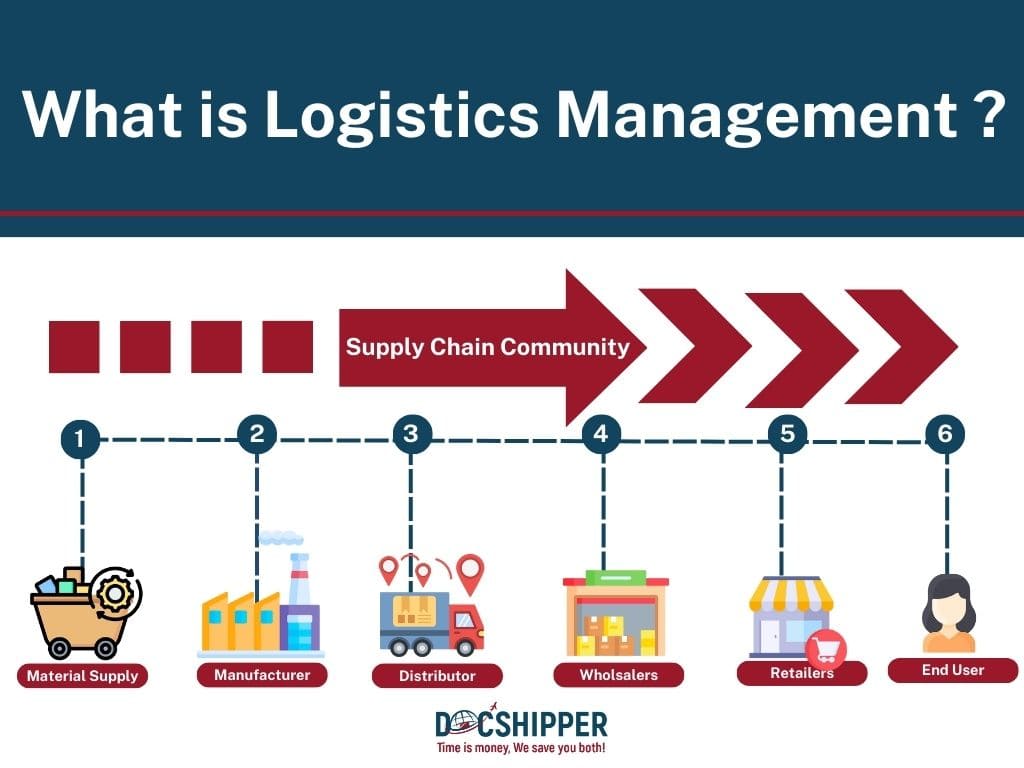
Additionally, logistics management incorporates the crucial realm of reverse logistics, crucial for e-commerce businesses. This involves returning products to distribution centers for servicing, refurbishing, decommissioning, or recycling aligning with the sustainable practices inherent in modern business strategies.
Supply chain management
Supply chain management, on the other hand, encompasses a broader spectrum of strategic planning activities. It spans demand planning, sales and operations planning, and comprehensive supply chain execution. This includes strategic sourcing and transportation management, focusing on the intricate coordination of the entire supply chain, from sourcing raw materials to delivering final products to customers.
In summary, while logistics management centers on the efficient movement of goods, supply chain management incorporates a more extensive set of planning activities, ensuring seamless operations across the entire supply chain. Understanding these distinctions is crucial for businesses aiming to optimize their logistics management and supply chain management strategies effectively.
What kind of jobs are available in logistics?
- Logistics Coordinator: coordinates and monitors the movement of goods, ensuring timely deliveries and efficient logistics operations.
- Warehouse Manager: Manages warehouse operations, including inventory management, order fulfillment, and optimizing storage space.
- Supply Chain Analyst: Analyzes supply chain data to identify trends, optimize processes, and improve overall supply chain efficiency.
- Transportation Manager: Oversees transportation operations, including route planning, carrier selection, and ensuring timely and cost-effective deliveries.
- Customs Broker: Facilitates the smooth movement of goods across international borders by ensuring compliance with customs regulations and managing documentation.
- E-commerce Logistics Specialist: Focuses on logistics solutions tailored to the unique demands of e-commerce businesses, ensuring efficient order fulfillment and delivery.
In addition to these specific roles, the logistics industry offers diverse opportunities, including positions such as Procurement Manager, Logistics Engineer, Inventory Analyst, Freight Broker, Last-Mile Delivery Driver, Packaging Engineer, Logistics Consultant, Reverse Logistics Specialist, and Logistics Technology Specialist. These roles cater to a variety of skills and interests, providing a broad spectrum of career options within the logistics sector.
 Future Of logistics: new technologies and trends
Future Of logistics: new technologies and trends
Given the logistics industry’s constant evolution, logistics management is naturally made up of diverse elements. These components include intricate planning, strategic procurement, and efficient coordination of goods and services, as well as anticipating future logistics trends. Managing the complexities of a supply chain can be overwhelming for logistics managers. Fortunately, the integration of advanced logistics technology has revolutionized the industry, transforming it into a thriving sector fueled by innovative technologies and digital logistics.
AI and Optimization in Logistics
Artificial Intelligence (AI) is at the forefront of this revolution. According to recent data, global artificial intelligence in the transportation and shipping markets surged to $3.1 billion in 2023 from $2.6 billion in the previous year, reflecting a remarkable 19.4% CAGR (Compound Annual Growth Rate). Companies like FourKites, project44, and FreightVerify are leading the charge with real-time visibility solutions, ensuring swift issue resolution. Additionally, industry giant Amazon utilizes AI for product recommendations and employs machine learning in innovations like Amazon Echo, enhancing both customer satisfaction and operational efficiency.
Warehouse automation in logistics

This trend isn’t exclusive to Amazon. The rise in online shopping, especially in groceries, has pushed companies to automate warehouses. This tech surge, driven by e-commerce, makes the entire process faster and more efficient, not only for Amazon but for companies worldwide. Automation is the new normal, keeping up with our need for speedy deliveries in the online shopping world.
Autonomous vehicles in logistics
As automation becomes the norm in warehouses, autonomous vehicles are becoming a must-have in the world of logistics. Take Amazon, for instance. Self-driving vehicles aren't just transforming warehouse operations; they're speeding up on-road deliveries, making them more efficient and profitable. Innovators like Starship Technologies are revolutionizing the way goods are transported autonomously, opening up exciting avenues in the logistics landscape. With logistics automation on the rise, these self-driving vehicles are no longer just a luxury; they're a game-changer.
Drones in logistics

3D printing in logistics
In the quest for faster production to meet consumer demands, 3D printing emerges as a game-changer in logistics. This innovative approach allows consumers to order products swiftly produced by local 3D printing shops, disrupting traditional supply chains. Imagine personalized items crafted at lightning speed, reshaping logistics and customized production entirely.
Conclusion
In today's competitive business landscape, logistics and supply chain management are more than operational functions; they're strategic advantages. Efficient logistics networks enhance customer satisfaction, cut costs, and boost profitability. Responsive supply chains enable quick adaptation to market demands, minimizing financial risks and capitalizing on emerging trends. Embracing eco-friendly practices fosters trust and enhances brand reputation. At SIAM Shipping, we offer expertise in these areas, ensuring your business thrives with streamlined operations and strategic foresight.
FAQ |What is logistics? [bible of logistics]
What does logistics entail?
Logistics refers to the comprehensive process of managing the procurement, movement, and storage of goods, services, and information throughout the supply chain. It involves various activities such as transportation, warehousing, inventory management, and order fulfillment.
Why is logistics crucial for businesses?
Logistics plays a pivotal role in ensuring the efficient flow of goods and services from manufacturers to consumers. It optimizes supply chain operations, reduces costs, enhances customer satisfaction, and fosters business growth and competitiveness.
What are the key components of logistics?
The key components of logistics include transportation, inventory management, warehousing, order processing, and supply chain optimization. These elements work together to streamline the movement of goods, minimize delays, and improve overall operational efficiency.
How does effective logistics management benefit businesses?
Former service, faster order fulfillment, minimized inventory holding, and enhanced market competitiveness. It allows businesses to adapt swiftly to market demands and maintain a robust supply chain network.
DocShipper info: Do you like our article today? For your business interest, you may like the following useful articles :
SIAM Shipping | Procurement - Quality control - Logistics
Alibaba, Dhgate, made-in-china... Many know of websites to get supplies in Asia, but how many have come across a scam ?! It is very risky to pay an Asian supplier halfway around the world based only on promises! DocShipper offers you complete procurement services integrating logistics needs: purchasing, quality control, customization, licensing, transport...
Communication is important, which is why we strive to discuss in the most suitable way for you!

![What is logistics [Bible of logistics]](https://siam-shipping.com/wp-content/uploads/2022/06/What-is-logistics-Bible-of-logistics.jpg)
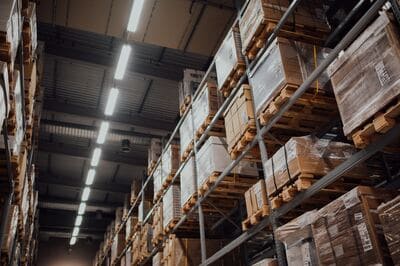

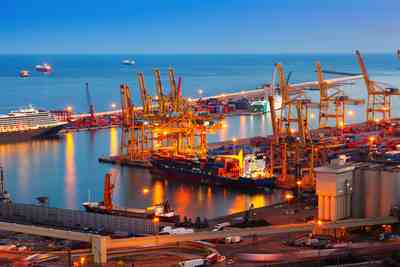
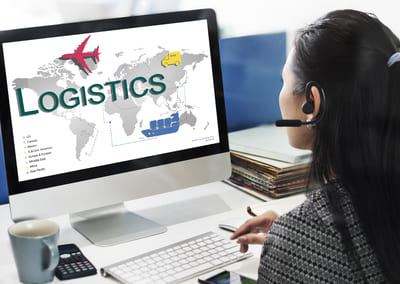






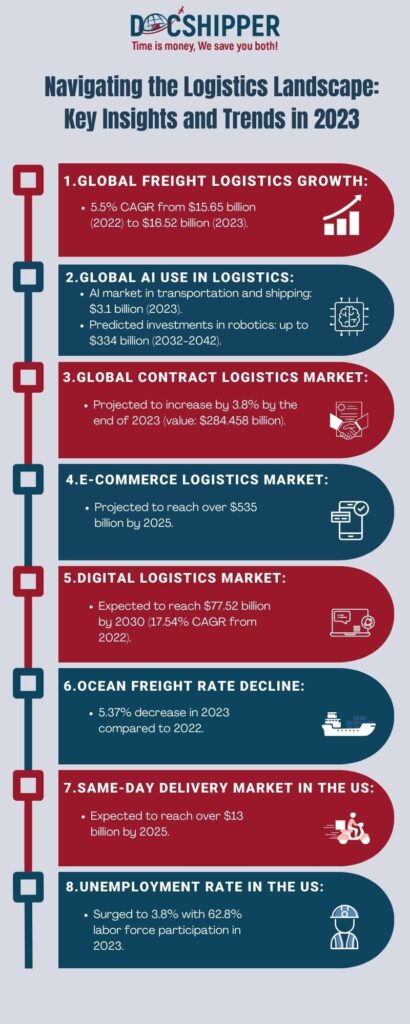 Future Of logistics: new technologies and trends
Future Of logistics: new technologies and trends


